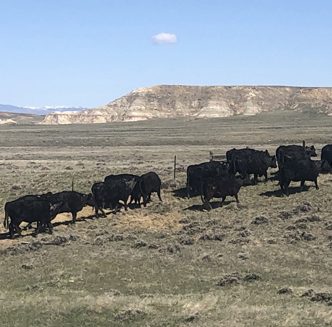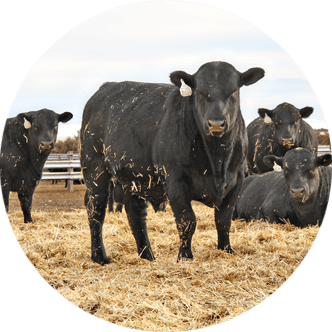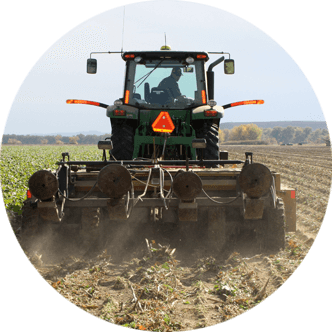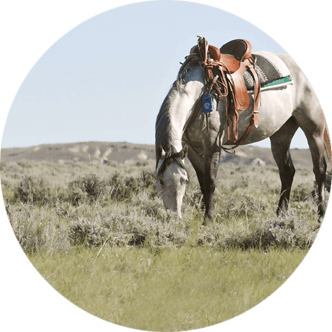High-priority noxious weeds discussed at annual event in Fremont County
On Feb. 5, during the 41st Annual Fremont County Farm and Ranch Days in Riverton, Fremont County Weed and Pest Director Aaron Foster discussed the district’s 2025-29 Special Management Program and the six noxious weeds they have deemed high priority.
For the first half of his presentation, Foster discussed the district’s three-pronged special management program which includes a countywide project, a focus area in Lander and Ocean Lake and specific management zones along Badwater Creek, Beaver Creek and the Sweetwater River.
To wrap up, Foster provided details on the six weed species including treatment and prevention options to stop their spread across Wyoming.
Houndstongue
First, Foster explained houndstongue is a biennial invasive plant which grows about knee high and can be characterized by its purplish-pink flowers and leaves that look like a hound’s tongue, hence its name.
“What’s really special about this plant and why it spreads so well is because once the flowers dry out and form a seed, they create a little nutlet with a lot of tiny hooks similar to Velcro. This makes the plant super effective at spreading via wildlife, pets, pants, socks, shoes, vehicle doors and tires, etc.,” said Foster.
“It is really moving up and down our wildlife corridors, especially where deer bed down underneath cottonwoods. So, we are seeing a lot of parent plants establishing along these corridors and drainages,” he added.
Because of this plant’s unique ability and the difficulty of containing wildlife movement, Foster admitted houndstongue “is a losing battle.”
Therefore, the district is focused on creating more awareness of the problem and helping landowners manage outbreaks to keep the weed contained.
The good news, according to Foster, is houndstongue may be stifled via mechanical control by simply digging it up with a shovel and pulling it out of the ground before it goes to seed.
He noted the best time to do this is in the spring. However, if individuals miss the seeding window, they can go back and dig plants up in the fall. Foster also pointed out control won’t be visible until a few weeks later.
Russian knapweed
Next, Foster discussed Russian knapweed, an invasive purple-flowered plant known for its aggressive root system and ability to form dense stands.
He explained fall is the best time to administer control of this weed, especially from around Sept. 15 until the ground freezes, although starting in late summer may work in cases where individuals are treating multiple species at once.
He noted broad treatment with Milestone in the fall has led to successful results, and optimum timing for administering treatment is when the plant is in the budding to flowering stage.
Leafy spurge
Leafy spurge is a common enemy for many producers across the state, and Lander has been a core area for the species for many years.
“Leafy spurge is a super aggressive plant that is very difficult to control,” Foster said. “Once someone has it, they’re probably always going to have it to some level. The only thing they can really hope for is keeping it under control.”
Foster noted the species is characterized by its distinctive yellow-green color and has a tough root system which can stand up to a lot of herbicides, as well as an effective seed-spreading strategy.
“This plant is very effective at spreading seeds because when seed pods dry up, they pop with a kind of forceful explosion that pushes seeds about 15 feet away, bouncing across fences and other things,” he said.
Control of leafy spurge is limited to two tight windows – in the spring when the plant is in bloom and in the fall around mid-August to mid-September.
“We have added QuinStar to our arsenal for leafy spurge, and we like what we see. We’re getting at least a full year of control with it and sometimes up to a year and a half before it starts to come back. But, QuinStar is kind of expensive,” Foster said.
Those treating leafy spurge on rangelands in the fall may also consider Panoramic, which Foster said is less expensive and works just as well as QuinStar.
“The key is not to use Panoramic on any irrigated pastures because it will ding grass growth,” he admitted. “But on rangelands, after grasses go dormant, we have found it works really good for us.”
Whitetop
According to Foster, whitetop is in the mustard family and is characterized by its showy white flowers blooming in early spring, as well as its ability to form dense monocultures.
Foster noted whitetop can often be confused with field pennycress. However, because pennycress is an annual, it can be pulled out of the ground with the entire root intact fairly easy. Additionally, pennycress produces small seeds in the shape of a penny, while whitetop does not.
He further explained the optimum time to administer control measures is in the spring during the pre-bloom stage, and the district has found good control with both Escort and Telar.
“If this window is missed, the fall rosette stage is another opportunity for control as well,” he said. “I have not actually witnessed this myself, but literature suggests patch treating every year for three years in a row results in pretty good control of whitetop.”
Dalmatian toadflax
The fifth species on Fremont County’s radar is Dalmatian toadflax, which was introduced to the area from Europe as an ornamental plant for its yellow flowers which look similar to snapdragons.
While only a few patches of Dalmatian toadflax have cropped up in the Lander area, the Fremont County Weed and Pest District is working diligently to keep it contained, Foster said.
He also mentioned Dalmatian toadflax is one of the harder weeds to kill.
“Dalmatian toadflax is a really tough one to kill, partly because it has adapted so well to dry conditions. It creates a waxy cuticle layer on leaves and stems to help hold water, making it very water efficient but also really difficult for herbicides to get in,” he remarked.
Because of this, Foster noted it is important to use an effective surfactant to help herbicides penetrate this waxy cuticle layer and stay on leaves. He recommends using a methylated seed oil (MSO) for this.
“Summer is a really good time to go after Dalmatian toadflax during the budding stage to early bloom, and Telar works well as long as a MSO is also used,” he explained. “Fall is another great time to treat Dalmatian toadflax, and at this time, individuals can add Panoramic to their arsenal. It works pretty well and it is a little cheaper.”
Baby’s breath
Lastly, Foster brought up baby’s breath, a bushy plant with tiny white blooms often used in the floral industry, which was recently added to the Fremont County Designated Weed List in an effort to get ahead of it.
Foster noted problem areas exist near Ocean Lake, in Jeffrey City and around the Lander Cemetery.
“Baby’s breath gets to be about thigh high and pretty bushy. It’s a perennial and a taproot so it doesn’t spread via its roots, it dries down in late summer, becomes a tumbleweed and when the wind blows, it bounces along and drops seeds along the way,” he explained.
When it comes to controlling baby’s breath, Foster noted timing is most important.
The plant should be treated during the blooming stage when there are visible rosettes.
“Escort and Telar work on it, but it is very timing dependent,” Foster said. “Using a surfactant is also important because baby’s breath has a lot of fine hairs on its leaves.”
Other best
management practices
In addition to individual control measures, Foster stressed the importance of some other best management practices such as good biosecurity and utilizing integrated pest management (IPM) practices.
“Leave weeds where they are, don’t take them to the next location,” he stated. “Clean equipment. ATVs are notoriously good at capturing weed seeds. And, limit disturbance. All of these weeds capitalize on disturbance. It is where they like to start.”
In regards to IPM, Foster noted there are biocontrol measures available for all of the aforementioned species, including a light biocontrol practice currently being established in Dubois.
“I also mentioned mechanical controls like grazing or pulling up weeds. Use herbicides when you need to use herbicides, but make sure you understand your equipment and use proper calibration,” he concluded.
Hannah Bugas is the managing editor of the Wyoming Livestock Roundup. Send comments on this article to roundup@wylr.net.





